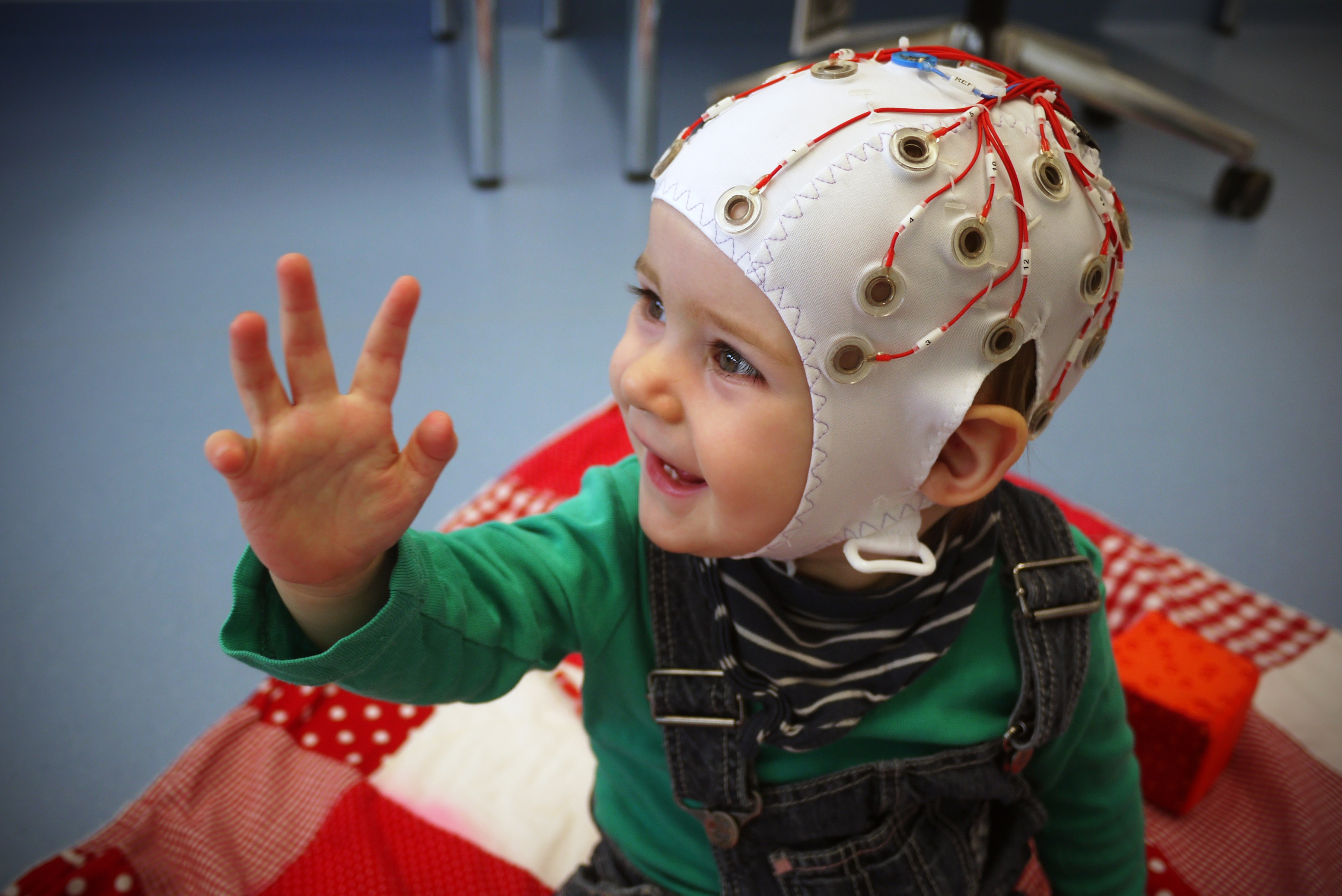Behavioral observations
In a behavioral measurement, we might, for example, show your child two pictures and observe how they respond. Which picture do they look at longer? Do they try to reach for one of the pictures? Or are they not interested in either of the pictures?
We usually record such a measurement on video in order to later analyze various aspects in detail, for example, how long or how often your child looked in a particular direction. This information can, for instance, tell us which picture is more interesting to a child, or whether they tend to look longer at happy faces or at fearful faces.

Questionnaires
An important measure in our research is questionnaires that you, as parents, complete at home.
Of course, you know your child best, and this allows us to learn more about your child’s background and everyday behavior.
This is particularly interesting for us, as even young children can differ greatly in their personalities, and such differences can naturally also influence their social and emotional behavior.
EEG (electroencephalography)
One question that particularly interests us is how the brain develops during infancy and what happens in babies’ brains in social or emotional situations. We aim to explore this using EEG measurements.

The idea behind this is actually quite simple. Brain cells communicate with each other through very small electrical voltage differences. Using special sensors (called electrodes), we can measure these voltage differences on the surface of the head and then make them visible on the computer.
Your child will not feel anything from this measurement and their normal behavior will not be affected.
The sensors are attached to a small cap that resembles a swimming cap. For the measurement, we place this cap on your child’s head. We then fill a warmed, skin-friendly gel into small openings in the sensors to create a better connection between the sensors and the scalp. During these preparations, your child sits on your lap while you or one of our staff members plays with them. In total, these preparations take about 10 minutes.
Depending on the study, your child may remain on your lap for the entire measurement or sit in an age-appropriate car seat (infant carrier) placed on the floor. In any case, you will be with your child the entire time.
At the end of the measurement, we remove the cap from your child’s head and use a washcloth and warm water to wash the remaining gel out of their hair. If necessary, we then dry their hair with a hairdryer.
Eyetracking
We measure your child’s eye movements and gaze direction using a special infrared camera system mounted under the screen. The device emits infrared light that is invisible to the human eye, which is then reflected by the eye. Based on this reflection, the position of the eye, the gaze direction and movement, as well as pupil size can be calculated. Your child will not notice this at all and does not need to wait, as this method can be used without any preparation time. Depending on the study, your child will sit either on your lap or in an age-appropriate car seat on the floor during this measurement.
fNIRS (functional near-infrared spectroscopy)
 For the fNIRS measurement, the children wear small caps with built-in sensors. The measurement is not noticeable for the child and has no negative side effects or consequences. They will only notice that they are wearing a cap similar to a swimming cap. From the cap, near-infrared light is shone onto the head, which is reflected by the underlying tissue and then recorded again by nearby sensors, called optodes. Using the reflected light, the blood’s oxygen saturation can be measured over time. This allows indirect conclusions to be drawn about brain activity, as it is assumed that activated brain areas require an increased oxygen supply.
For the fNIRS measurement, the children wear small caps with built-in sensors. The measurement is not noticeable for the child and has no negative side effects or consequences. They will only notice that they are wearing a cap similar to a swimming cap. From the cap, near-infrared light is shone onto the head, which is reflected by the underlying tissue and then recorded again by nearby sensors, called optodes. Using the reflected light, the blood’s oxygen saturation can be measured over time. This allows indirect conclusions to be drawn about brain activity, as it is assumed that activated brain areas require an increased oxygen supply.
